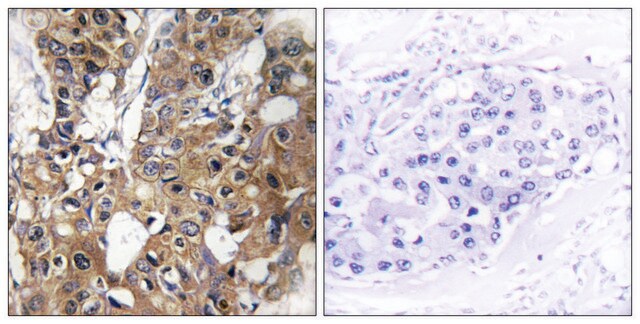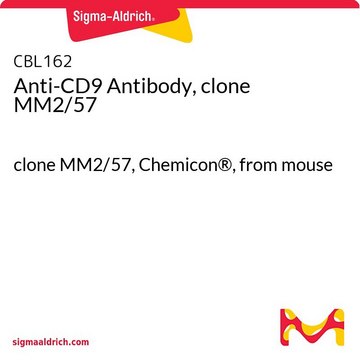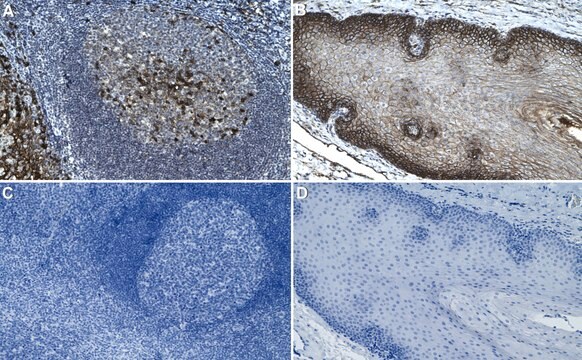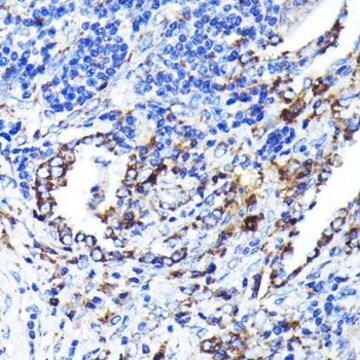MABT914
Anti-CD9 Antibody, clone Z9.1
clone Z9.1, from mouse
Synonym(s):
5H9 antigen, Cell growth-inhibiting gene 2 protein, Leukocyte antigen MIC3, Motility-related protein, MRP-1, Tetraspanin-29, Tspan-29, p24)
About This Item
FACS
IHC
WB
flow cytometry: suitable
immunohistochemistry: suitable (paraffin)
western blot: suitable
Recommended Products
biological source
mouse
Quality Level
antibody form
purified immunoglobulin
antibody product type
primary antibodies
clone
Z9.1, monoclonal
species reactivity
human
technique(s)
ELISA: suitable
flow cytometry: suitable
immunohistochemistry: suitable (paraffin)
western blot: suitable
isotype
IgG1κ
NCBI accession no.
UniProt accession no.
shipped in
ambient
target post-translational modification
unmodified
Gene Information
human ... CD9(928)
General description
Specificity
Immunogen
Application
Flow Cytometry Analysis: A 1:1,000 dilution from a representative lot detected CD9 in human PBMCs.
human tonsil, human breast cancer, human liver cancer, human skin
Quality
Immunohistochemistry Analysis: A 1:1000 dilution of this antibody detected CD9 in human liver cancer tissue.
Target description
Physical form
Other Notes
Not finding the right product?
Try our Product Selector Tool.
Storage Class Code
12 - Non Combustible Liquids
WGK
WGK 1
Certificates of Analysis (COA)
Search for Certificates of Analysis (COA) by entering the products Lot/Batch Number. Lot and Batch Numbers can be found on a product’s label following the words ‘Lot’ or ‘Batch’.
Already Own This Product?
Find documentation for the products that you have recently purchased in the Document Library.
Our team of scientists has experience in all areas of research including Life Science, Material Science, Chemical Synthesis, Chromatography, Analytical and many others.
Contact Technical Service







